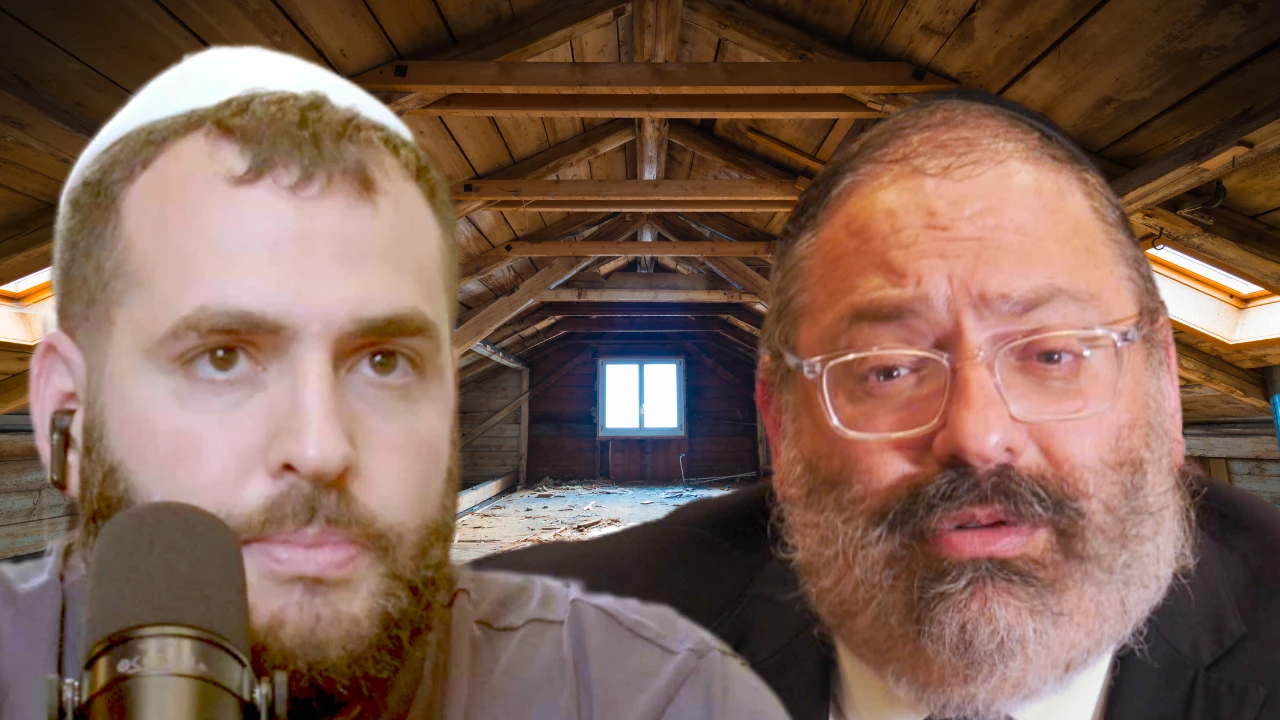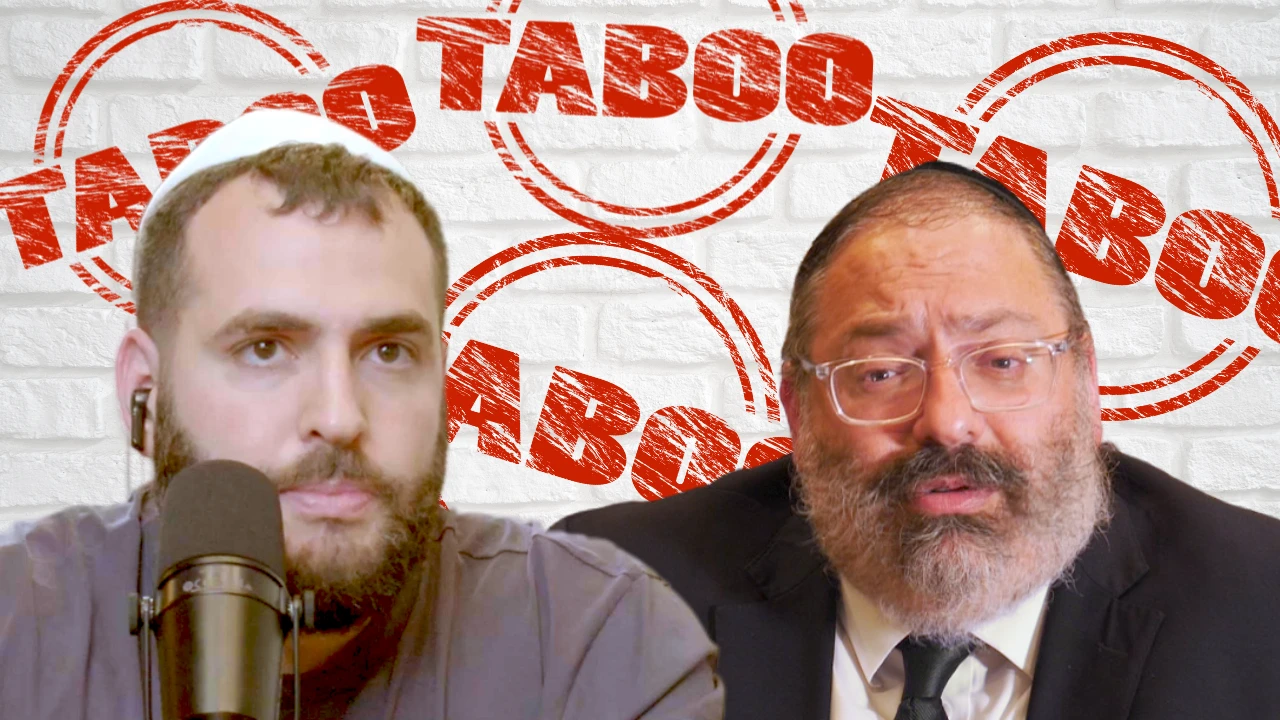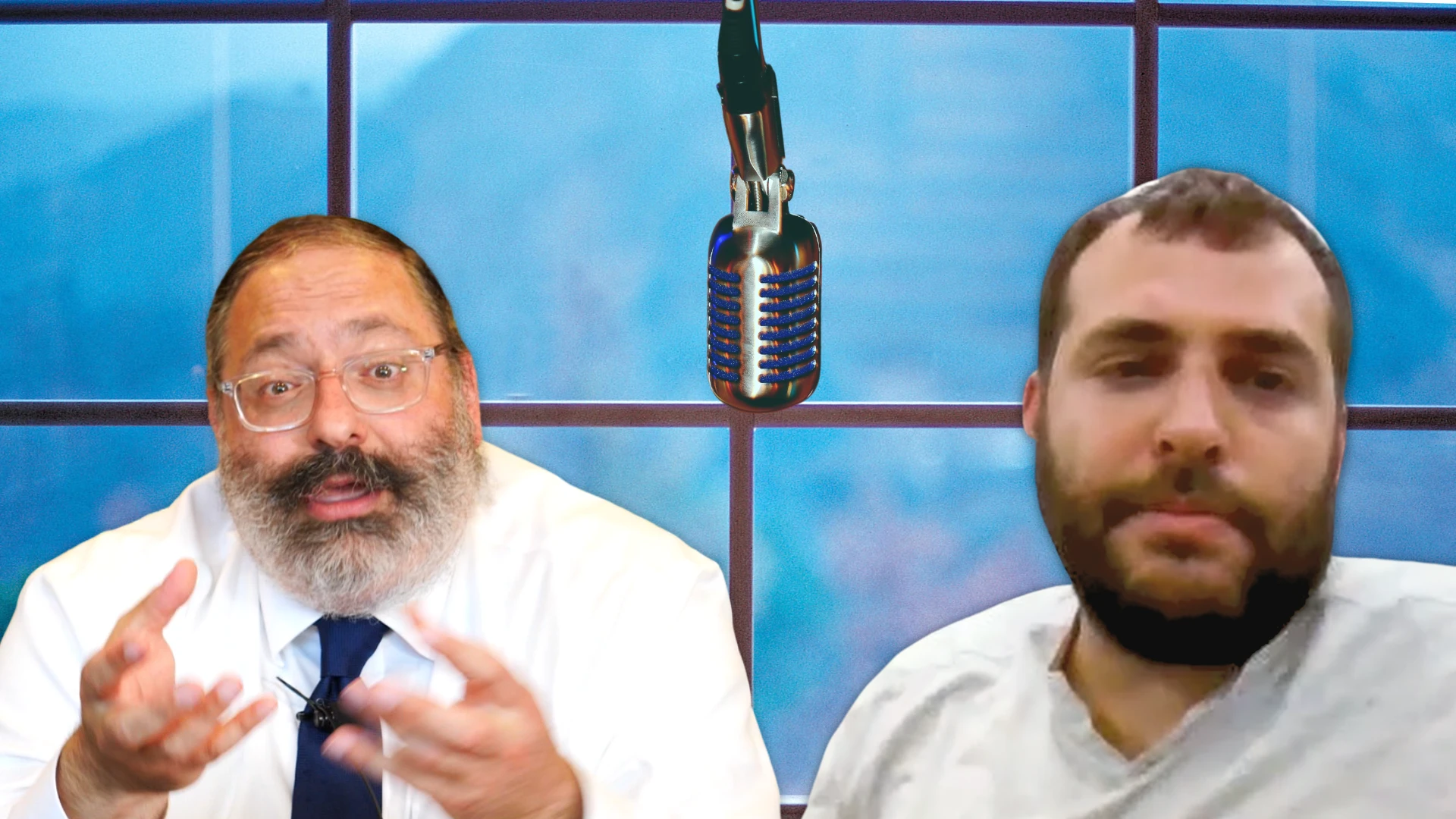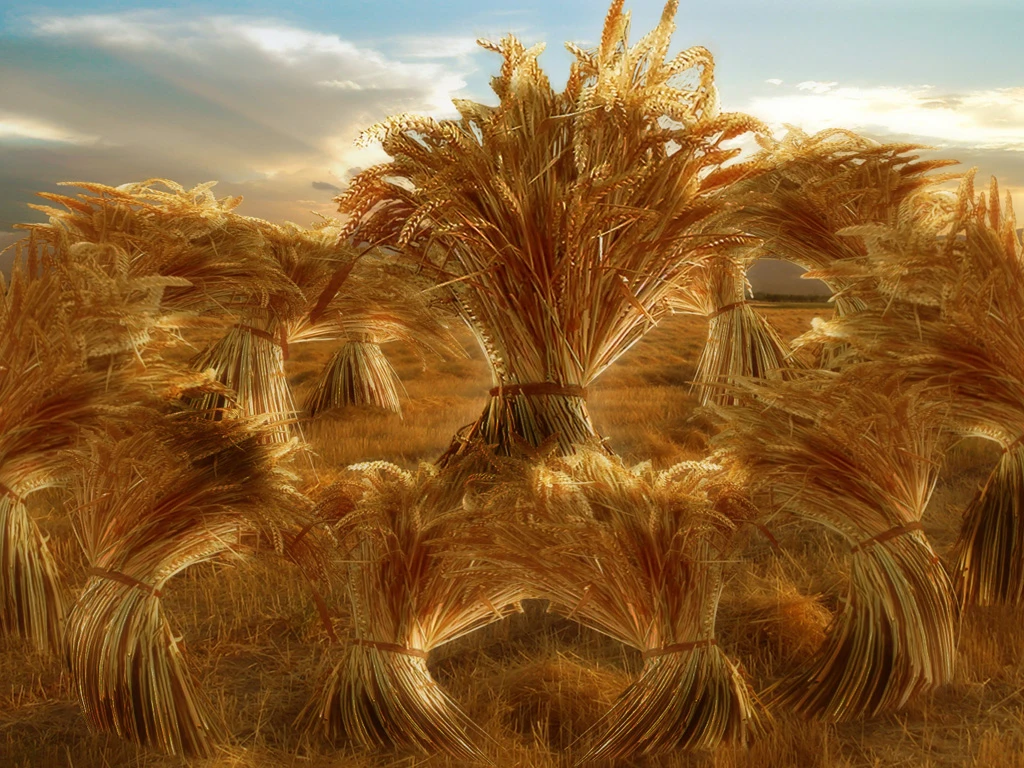Whole, Broken, Whole
The Secret of the Shofar Sounds
- September 27, 2011
- |
- 28 Elul 5771
Rabbi YY Jacobson
2964 views
Sounding the Shofar by Elena Flerova
Whole, Broken, Whole
The Secret of the Shofar Sounds
Rabbi YY Jacobson
- September 27, 2011
On Rosh Hashanah we produce three sounds via the shofar. The first sound is called tekiah, a single whole note. The second is shevarim, three shorter “broken” notes, which sound like three sighs. The third is called teruah, nine staccato notes in rapid succession, which sound like short sobs.
What do they represent? Tekiah reminds us that once we were whole. Each of us was born whole. Shevarim reminds us that in life we are plagued by questions, confusion, and disappointments; we become fragmented, and scattered, causing our existential sighs. Teruah reminds us how many people’s lives have been shattered through various negative experiences into tiny pieces. They are sobbing consciously or unconsciously.
But what we do after each time we blow the sounds of brokenness? We blow the tekiah again. This reminds us that we can be restored to wholeness again.What is more, following all of the shofar sounds, we reach the tekiah gedolah, three sounds? We reach tekiah gedolah, "the great tekiah"—one note that lasts as long as the shofar-blower has breath, a much longer note than the initial blast that began the cycle. Through surviving brokenness, we can reach an even deeper kind of wholeness than we knew before.The sages of the Talmud offered the following teaching. A clay pot, being porous, is susceptible to tumah, ritual impurity, through contact with certain impure substances. If a clay vessel becomes tamei, the way to make it again tahor (ritually pure) is to break it and then glue it back together. Through the pot's brokenness, in other words, wholeness is restored; it becomes pure again.We too are made from clay, as Genesis describes, "G-d created the human being clay from the earth." When we allow ourselves to be open to our vulnerability and brokenness, we become capable of a deeper and more powerful wholeness than we knew in the first place. Tekiah gedolah packs its punch precisely because it arises out of scattered sounds. The places where we're glued back together are places where the light of G-d can enter.In the RainI once read an article, which related the following experience:She had been shopping with her Mom in Walmart. She must have been 6 years old, this beautiful red-haired, freckle-faced image of innocence. It was pouring outside. The kind of rain that gushes over the top of rain gutters, so much in a hurry to hit the earth it has no time to flow down the spout.We all stood there under the awning and just inside the door of the Wal-Mart. We waited, some patiently, others irritated because nature messed up our hurried day. I am always mesmerized by rainfall. I get lost in the sound and sight of the heavens washing away the dirt and dust of the world.
Memories of running, splashing so carefree as a child come pouring in as a welcome reprieve from the worries of my day. Her voice was so sweet as it broke the hypnotic trance we were all caught in. "Mom, let's run through the rain," she said.
"What?" Mom asked.
"Let's run through the rain!" She repeated.
"No, honey. We'll wait until it slows down a bit," Mom replied.
This young child waited about another minute and repeated: "Mom, let's run through the rain."
"We'll get soaked if we do," Mom said.
"No, we won't, Mom. That's not what you said this morning," the young girl said as she tugged at her Mom's arm.
"This morning? When did I say we could run through the rain and not get wet?"
"Don't you remember? When you were talking to Daddy about his cancer, you said, 'If G-d can get us through this, He can get us through anything!'"
The entire crowd stopped dead silent. I swear you couldn't hear anything but the rain. We all stood silently. No one came or left in the next few minutes. Mom paused and thought for a moment about what she would say. Now some would laugh it off and scold her for being silly. Some might even ignore what was said. But this was a moment of affirmation in achild's life. A time when innocent trust can be nurtured so that it will bloom into confidence, courage and faith.
"Honey, you are absolutely right. Let's run through the rain. If G-d let's us get wet, well maybe we just needed washing," Mom said. Then off they ran. We all stood watching, smiling and laughing as they darted past the cars and yes, through the puddles. They held their shopping bags over their heads just in case. They got soaked. But they were followed by a few who screamed and laughed like children all the way to their cars."And yes, I did. I ran. I got wet. I needed washing."Shanah Tovah, a year of health, happiness, prosperity, peace, and redemption.- Comment
Class Summary:
Dedicated by David and Eda Schottenstein
in memory of Rabbi Gavriel Noach and Rivki Holtzberg and all of the Mumbai Kedoshim
And in memory of a young soul Alta Shula Swerdlov
daughter of Rabbi Yossi and Hindel Swerdlov
On Rosh Hashanah we produce three sounds via the shofar. The first sound is called tekiah, a single whole note. The second is shevarim, three shorter “broken” notes, which sound like three sighs. The third is called teruah, nine staccato notes in rapid succession, which sound like short sobs.
What do they represent? Tekiah reminds us that once we were whole. Each of us was born whole. Shevarim reminds us that in life we are plagued by questions, confusion, and disappointments; we become fragmented, and scattered, causing our existential sighs. Teruah reminds us how many people’s lives have been shattered through various negative experiences into tiny pieces. They are sobbing consciously or unconsciously.
Memories of running, splashing so carefree as a child come pouring in as a welcome reprieve from the worries of my day. Her voice was so sweet as it broke the hypnotic trance we were all caught in. "Mom, let's run through the rain," she said.
"What?" Mom asked.
"Let's run through the rain!" She repeated.
"No, honey. We'll wait until it slows down a bit," Mom replied.
This young child waited about another minute and repeated: "Mom, let's run through the rain."
"We'll get soaked if we do," Mom said.
"No, we won't, Mom. That's not what you said this morning," the young girl said as she tugged at her Mom's arm.
"This morning? When did I say we could run through the rain and not get wet?"
"Don't you remember? When you were talking to Daddy about his cancer, you said, 'If G-d can get us through this, He can get us through anything!'"
The entire crowd stopped dead silent. I swear you couldn't hear anything but the rain. We all stood silently. No one came or left in the next few minutes. Mom paused and thought for a moment about what she would say. Now some would laugh it off and scold her for being silly. Some might even ignore what was said. But this was a moment of affirmation in achild's life. A time when innocent trust can be nurtured so that it will bloom into confidence, courage and faith.
"Honey, you are absolutely right. Let's run through the rain. If G-d let's us get wet, well maybe we just needed washing," Mom said. Then off they ran. We all stood watching, smiling and laughing as they darted past the cars and yes, through the puddles. They held their shopping bags over their heads just in case. They got soaked. But they were followed by a few who screamed and laughed like children all the way to their cars.
Tags
Categories
Rosh Hashanah Essay
Rabbi YY Jacobson
- September 27, 2011
- |
- 28 Elul 5771
- |
- 2964 views
Whole, Broken, Whole
The Secret of the Shofar Sounds
Rabbi YY Jacobson
- September 27, 2011
On Rosh Hashanah we produce three sounds via the shofar. The first sound is called tekiah, a single whole note. The second is shevarim, three shorter “broken” notes, which sound like three sighs. The third is called teruah, nine staccato notes in rapid succession, which sound like short sobs.
What do they represent? Tekiah reminds us that once we were whole. Each of us was born whole. Shevarim reminds us that in life we are plagued by questions, confusion, and disappointments; we become fragmented, and scattered, causing our existential sighs. Teruah reminds us how many people’s lives have been shattered through various negative experiences into tiny pieces. They are sobbing consciously or unconsciously.
But what we do after each time we blow the sounds of brokenness? We blow the tekiah again. This reminds us that we can be restored to wholeness again.What is more, following all of the shofar sounds, we reach the tekiah gedolah, three sounds? We reach tekiah gedolah, "the great tekiah"—one note that lasts as long as the shofar-blower has breath, a much longer note than the initial blast that began the cycle. Through surviving brokenness, we can reach an even deeper kind of wholeness than we knew before.The sages of the Talmud offered the following teaching. A clay pot, being porous, is susceptible to tumah, ritual impurity, through contact with certain impure substances. If a clay vessel becomes tamei, the way to make it again tahor (ritually pure) is to break it and then glue it back together. Through the pot's brokenness, in other words, wholeness is restored; it becomes pure again.We too are made from clay, as Genesis describes, "G-d created the human being clay from the earth." When we allow ourselves to be open to our vulnerability and brokenness, we become capable of a deeper and more powerful wholeness than we knew in the first place. Tekiah gedolah packs its punch precisely because it arises out of scattered sounds. The places where we're glued back together are places where the light of G-d can enter.In the RainI once read an article, which related the following experience:She had been shopping with her Mom in Walmart. She must have been 6 years old, this beautiful red-haired, freckle-faced image of innocence. It was pouring outside. The kind of rain that gushes over the top of rain gutters, so much in a hurry to hit the earth it has no time to flow down the spout.We all stood there under the awning and just inside the door of the Wal-Mart. We waited, some patiently, others irritated because nature messed up our hurried day. I am always mesmerized by rainfall. I get lost in the sound and sight of the heavens washing away the dirt and dust of the world.
Memories of running, splashing so carefree as a child come pouring in as a welcome reprieve from the worries of my day. Her voice was so sweet as it broke the hypnotic trance we were all caught in. "Mom, let's run through the rain," she said.
"What?" Mom asked.
"Let's run through the rain!" She repeated.
"No, honey. We'll wait until it slows down a bit," Mom replied.
This young child waited about another minute and repeated: "Mom, let's run through the rain."
"We'll get soaked if we do," Mom said.
"No, we won't, Mom. That's not what you said this morning," the young girl said as she tugged at her Mom's arm.
"This morning? When did I say we could run through the rain and not get wet?"
"Don't you remember? When you were talking to Daddy about his cancer, you said, 'If G-d can get us through this, He can get us through anything!'"
The entire crowd stopped dead silent. I swear you couldn't hear anything but the rain. We all stood silently. No one came or left in the next few minutes. Mom paused and thought for a moment about what she would say. Now some would laugh it off and scold her for being silly. Some might even ignore what was said. But this was a moment of affirmation in achild's life. A time when innocent trust can be nurtured so that it will bloom into confidence, courage and faith.
"Honey, you are absolutely right. Let's run through the rain. If G-d let's us get wet, well maybe we just needed washing," Mom said. Then off they ran. We all stood watching, smiling and laughing as they darted past the cars and yes, through the puddles. They held their shopping bags over their heads just in case. They got soaked. But they were followed by a few who screamed and laughed like children all the way to their cars."And yes, I did. I ran. I got wet. I needed washing."Shanah Tovah, a year of health, happiness, prosperity, peace, and redemption.- Comment
Dedicated by David and Eda Schottenstein
in memory of Rabbi Gavriel Noach and Rivki Holtzberg and all of the Mumbai Kedoshim
And in memory of a young soul Alta Shula Swerdlov
daughter of Rabbi Yossi and Hindel Swerdlov
Class Summary:
Related Classes
Please help us continue our work
Sign up to receive latest content by Rabbi YY
Join our WhatsApp Community
Join our WhatsApp Community














Please leave your comment below!